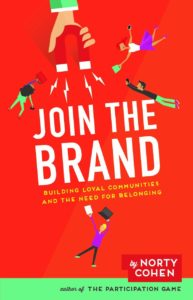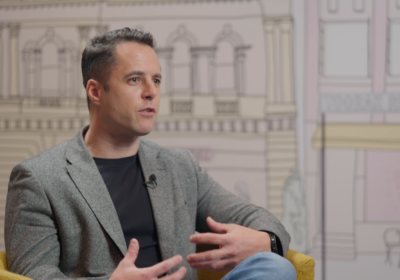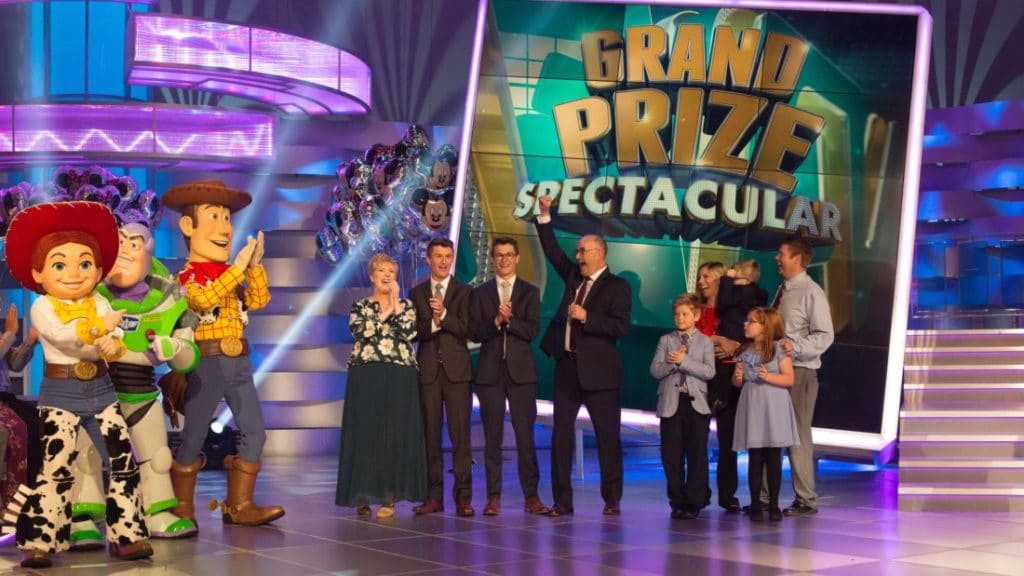The following is an excerpt from Join the Brand: Building Loyal Communities and the Need for Belonging (IdeaPress Books, 2018).
Brands and consumers are inundated with messaging 24/7. Everyone is aware of the massive overdose of media, which is now made up of both brand and consumer-generated content.
This media overdose creates heightened competition to design the most shareworthy content, both for marketers and consumers.
The accessibility of media has shaped how we consume messaging, thereby changing what is entertaining to consumers. Longer form video used to make sense, but now with the smartphone’s introduction in 2007, content has transformed to quick 10-second or less bites.
Let’s look at three ways content has transformed over the last seven decades.
The Original Content Creator
Sylvester “Pat” Weaver was a pioneer in both the entertainment and advertising industries, setting the tone for many of today’s programming. As we produce content every day, we should pay homage to Mr. Weaver (father of the actress Sigourney Weaver). Among other things, Pat Weaver created The Today Show, The Tonight Show, Wide Wide World, and the variety format that eventually inspired Saturday Night Live.

Originally, radio stations relied on advertisers to produce content in the form of one hour shows. Ad agencies created the concepts, hired the talent and paid the networks to air their shows. With this in mind, Weaver moved to the ad agency business in New York in the 1940s.
By the early 1950s, television began to gain momentum in American homes. TV networks were operating very much like their radio counterparts, by allowing ad agencies to create shows and promote individual brands.
Thanks to the expanding capability of the medium, budgets were exceeding $1 million per show and many advertisers couldn’t afford to produce consistent content single-handedly. Weaver developed the idea of a network creating its own shows and breaking up the advertising into “magazines” of short commercials instead of advertising one brand with each show.
CBS turned him down, so Weaver brought the idea to NBC. It took two years, but even with resistance from the agencies, NBC started producing its own shows and selling 60-second spots. Weaver went on to serve as President of NBC twice in his legendary career.
Even after Weaver retired, he kept looking for what would come next, eventually becoming a pioneer in cable TV. He knew it would evolve.
In his autobiography, The Best Seat In The House, he said, “The future of communications is so fascinating, I wish I had another lifetime to help it in realizing its potential.”
Sylvester Weaver died in 2002.
The Top Ten List
David Letterman has been off the air since 2015, but early in his career he set the tone for “top” lists forever.
Here’s how it happened: one of Letterman’s writers, Randy Cohen, was chatting with colleagues and brought up a funny Cosmo article with the title, “Ten Sexiest Men Over Sixty.” Several months later, the Letterman version was introduced in September, 1984.
The title: “Top Ten Words That Almost Rhyme with Peas” was the very first one in a tradition that carried over between two networks, NBC and CBS.
The “top ten lists” concept became a regular feature of the show and was shared with guest presenters and celebrities. The list became known for its drum-roll effect and reverse order format with the funniest answers loaded at the top to maintain interest.

When social content first became a medium, creators, such as Buzzfeed, started using these short, catchy lists that eventually caught on and became part of everyone’s vernacular.
The Original User-Generated Content
It was in the late ‘80s when another phenomenon gained traction—video camcorders. These were big, bulky and cost $2,000, which was the exact amount of the prize for winning with your funniest home video.
America‘s Funniest Home Videos ran originally as a special in November of 1989. The series started in January of 1990 and is still being produced today as the longest running primetime show on ABC. The short form videos we know today on social platforms can all trace their roots back to the original clips of dogs and kids doing funny stuff.
It all began with an ad in TV Guide magazine (another relic) and asked viewers to send in their home VHS tapes. Host Bob Saget would make faces and share blooper moments. All together, they have produced over 650 episodes of short clips in their 28 seasons so far.
In its first year, 32 million people tuned in. Each show featured about 50 clips.
Ultimately, America‘s Funniest Home Videos demonstrated that making videos is fun and gets the kind of attention everyone wants.
The Friend Zone
Let’s leave the last 70 years behind and fast-forward to the present: Today, everyone is a smartphone content creator.

- Consumers are on social media to connect with their friends, not brands.
- Word of mouth from friends and family is 2.5x more effective than TV, Facebook and YouTube advertising combined.
- Within consumers’ top 100 favorite brands, ad spend can vary from minimal to massive and still achieve loyalty and popularity.
Ultimately, personal connection is the gateway to fans and superfans. Engagement is earned through relevant content that actually does something for people, something with value beyond the simple exchange of goods and services.
When we asked consumers why they were connecting on social media, only 3% said it was to connect with brands. Conversely, 55% responded they use social media to connect with their friends.
Connection platforms do their job when they deliver friends of friends to foster connection. Brands dig themselves into a hole if they can’t deliver something of value, as well.
Smartphones enable consumers to continuously market themselves. And it goes everywhere with them. Their “buyers?” Their social circle. The better content people have to share, the more connection they receive.
Today, you’re marketing to marketers. You’d win more if you became their friend.





Join the conversation